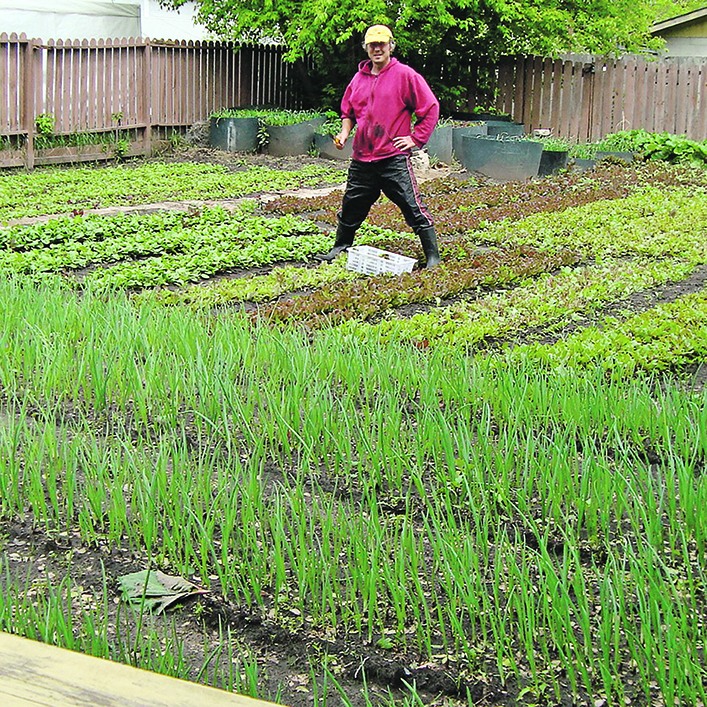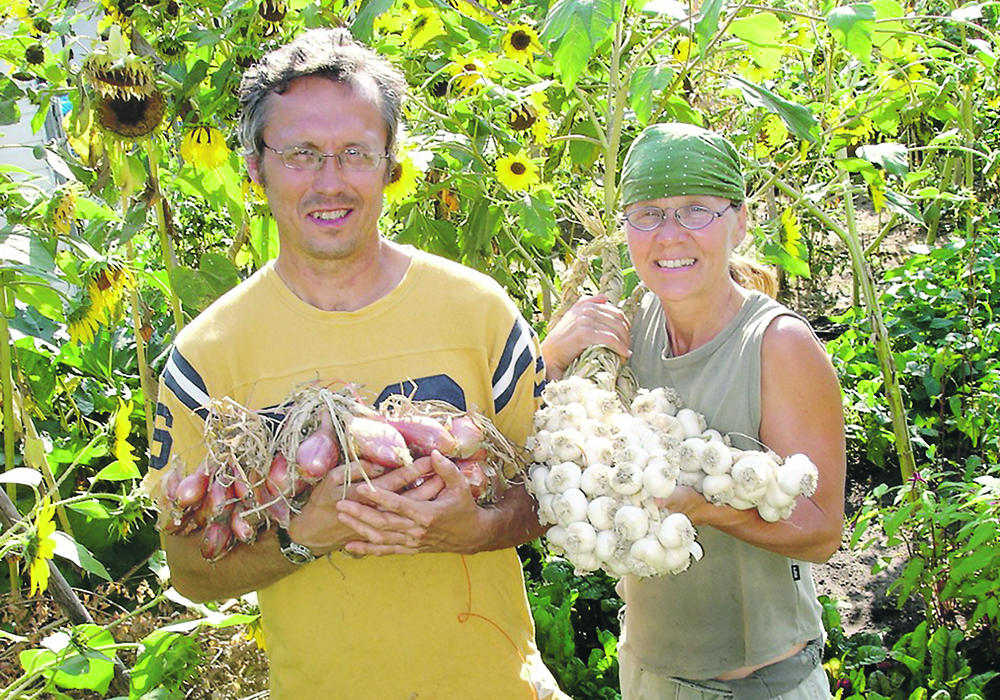Big-city market gardeners put together a network of homeowners willing to let them grow vegetables on their property
The idea of urban farming is not new, but Pleasantdale, Sask., resident Wally Satzewich has not only made a business out of it, but has been training others to do the same, with his SPIN Farming market garden business model.
SPIN, which stands for Small Plot INtensive farming, is a model Satzewich formulated during the past two decades.
He said in the mid-1990s he switched to farming a quarter section of land using a large irrigation system, “and then it took me a decade to figure out that this isn’t where I needed to go.”
He said he saw a need for local food production, but he had to figure out how to make it accessible.
“We sold our land. We lived in the city of Saskatoon. … I thought I’d continue our membership at the Saskatoon Farmers’ Market. I just started gardening on backyard garden plots because I knew what I could do with them. …eventually (it) got to the point where we had 35 garden plots on the go at one time,” Satzewich said.
He, his wife Gail Vandersteen and business partner Roxanne Christensen developed a series of books and online guides to show other people the way. It includes a guide on how to rent or borrow land from neighbours.
Satzewich said he acquired land in his Saskatoon neighbourhood in about 2000.
“I had my own backyard garden plot. I had my uncle’s and I got started with that. … a neighbour saw what I was doing and she said, ‘hey, look, if you want to have my garden plot, you’re certainly welcome.’”
Then he placed an ad in a local paper and got four or five more garden plots that way.
“People saw what we were doing and they were literally blown away because they don’t look like your average backyard garden.”
A plot in an urban area or a small rural town is ideal for SPIN farming, Satzewich said.
“One of the advantages is that you have an urban water supply, you can just turn on the faucet to your house and you have your irrigation and water supply, unlike in the country where you usually have to develop your own well site, where you have to irrigate from a stream or a river.”
As well, urban or small town areas have neighbours to borrow land from. In smaller centres, like Pleasantdale, Sask., where Satzewich lives, the property lots are very large, and inexpensive.
Being in or near a larger urban centre also has advantages because of proximity to farmers markets, grocery stores, restaurants, neighbours and hospitals.

For those looking to produce only for their families, there is a SPIN model for them too.
“The focus there isn’t on making a profit. It’s making efficient use of your land. You basically look at yourself as a market gardener … but you’re just growing for home use. So, it means you’re taking yourself way beyond a typical home gardener in terms of the thought processes involved….
“The need for food and the need for food production and the need to develop sustainable food systems, that doesn’t go away,” said Satzewich. “That pressure is increasing. We’re getting interest from people right now of taking this further in terms of possibly developing some training for them.”
The interest in SPIN farming has been far reaching, he said.
“We’ve had interest all over Canada and the (United States) and beyond. I’ve had interest from people from Europe. We talk to people from Africa wanting to implement some version of it,” he said.















